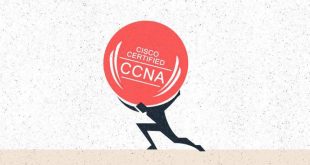In an era where everything is accessible at the touch of a finger, education, too, is embracing the innovative power of technology.
The modern technology has created a lot of possible opportunities for the teachers and students
By transforming the way we teach and learn. Looking at this digital age, it becomes evident that the evolving preferences of today’s learners are closely tied to technological advancements.
This shift in learning dynamics is ushering in a new era, where traditional classrooms are giving way to virtual classrooms, breaking free from the confines of four walls and redefining the very essence of learning.
Digital Classroom Revolution
The traditional model of education, with its physical classrooms and conventional teaching methods, is undergoing a radical transformation.
Technological advancements have become instrumental in shaping the learning landscape, catering to the evolving needs of students.
Research consistently indicates that the current generation is more engaged and receptive to learning when technology is seamlessly integrated into the educational process.
The emergence of “digital natives,” born in the late 20th century and beyond, signifies a generation inherently familiar with digital technologies.
Well, virtual Classrooms resonate profoundly with these individuals, representing more than just a change in medium.
These platforms align seamlessly with the digital natives’ accustomed modes of interaction and information consumption, marking a natural progression toward a more technologically integrated and interactive educational experience.
Advantages of Virtual Classrooms
Accessibility Beyond Boundaries– Virtual Classrooms obliterate the geographical constraints that traditional classrooms impose. With the help of technology, students from diverse locations can connect seamlessly, fostering a globalised learning community. This inclusivity ensures that education is not limited by physical boundaries, opening up a world of possibilities for both students and educators.
Impressive. Isn’t it?
Flexible Learning Environments– Say goodbye to the rigid structures of traditional classrooms as Virtual Classrooms usher in a new era of flexibility.
Here, with the help of virtual reality, students become architects of their own learning experiences, tailoring their educational journey to align with individual needs.
The ability to access materials and participate in classes at their own pace is revolutionary, accommodating diverse learning styles and promoting a truly personalized and effective learning adventure.
For example, VR engineering modules empower budding engineers to transcend textbooks. They can virtually visit construction sites, actively disassemble complex structures, and gain practical insights that textbooks alone cannot provide.
This immersive approach not only enhances their understanding of engineering principles but also instills a profound connection with the real-world applications of their studies.
Interactive Learning Experiences– The standout feature of Virtual Classrooms lies in the immersive and interactive learning experiences they offer.
Through VR labs, students aren’t just passive recipients of information but active participants in simulations and practical exercises. This hands-on approach not only enhances understanding but also fosters a deeper connection with the subject matter.
Through VR, abstract concepts come to life, and students can practically apply theoretical knowledge in a controlled, yet dynamic, environment. The result? A richer understanding of the material and a heightened enthusiasm for learning.
Navigating the Challenges
With the numerous advantages that VR offers in the education system, there are some challenges that are inevitably accompanied by it.
One among them is the technological barriers. For multiple reasons, not all students have access to the necessary pieces of equipment or a stable internet connection which creates a digital divide.
Well, the challenges of virtual labs are not restricted to the students only. It is a surprise that educators too, face a learning difficulty as they try to shift from the traditional methods of teaching to the more advanced virtual learning platforms.
Institutions must adopt certain training programs that can help them empower the teachers with the skills that are needed to work in the virtual platform.
Institutions must invest in professional developmental initiatives to ensure that educators can harness the full potential of Virtual Classrooms.
The Future of Education
The future of education lies in a harmonious blend of traditional and virtual learning experiences. The hybrid learning models leverage the strengths of both approaches, offering the structure of traditional classrooms along with the flexibility and innovation of virtual platforms.
This symbiotic relationship ensures a comprehensive and dynamic educational experience for students.
Along with this we know that virtual classrooms extend beyond the traditional academic setting, providing avenues for continuous learning throughout one’s life.
Professional development, skill enhancement, and specialized training programs can be seamlessly integrated into Virtual Classrooms, allowing individuals to adapt and thrive in an ever-changing world.
Conclusion
To conclude, virtual classrooms have emerged as the bridge connecting learners to a limitless expanse of knowledge.
The digital revolution in education transcends the physical confines of traditional classrooms, offering a dynamic and inclusive learning environment. While challenges persist, the transformative potential of Virtual Classrooms is undeniable.
As we navigate this evolving landscape, one thing remains clear that the concept of Virtual Classrooms is not just a glimpse into the future of education, instead, they are the future, redefining the very essence of learning for generations to come.
Read More:- The Future of Augmented Reality






